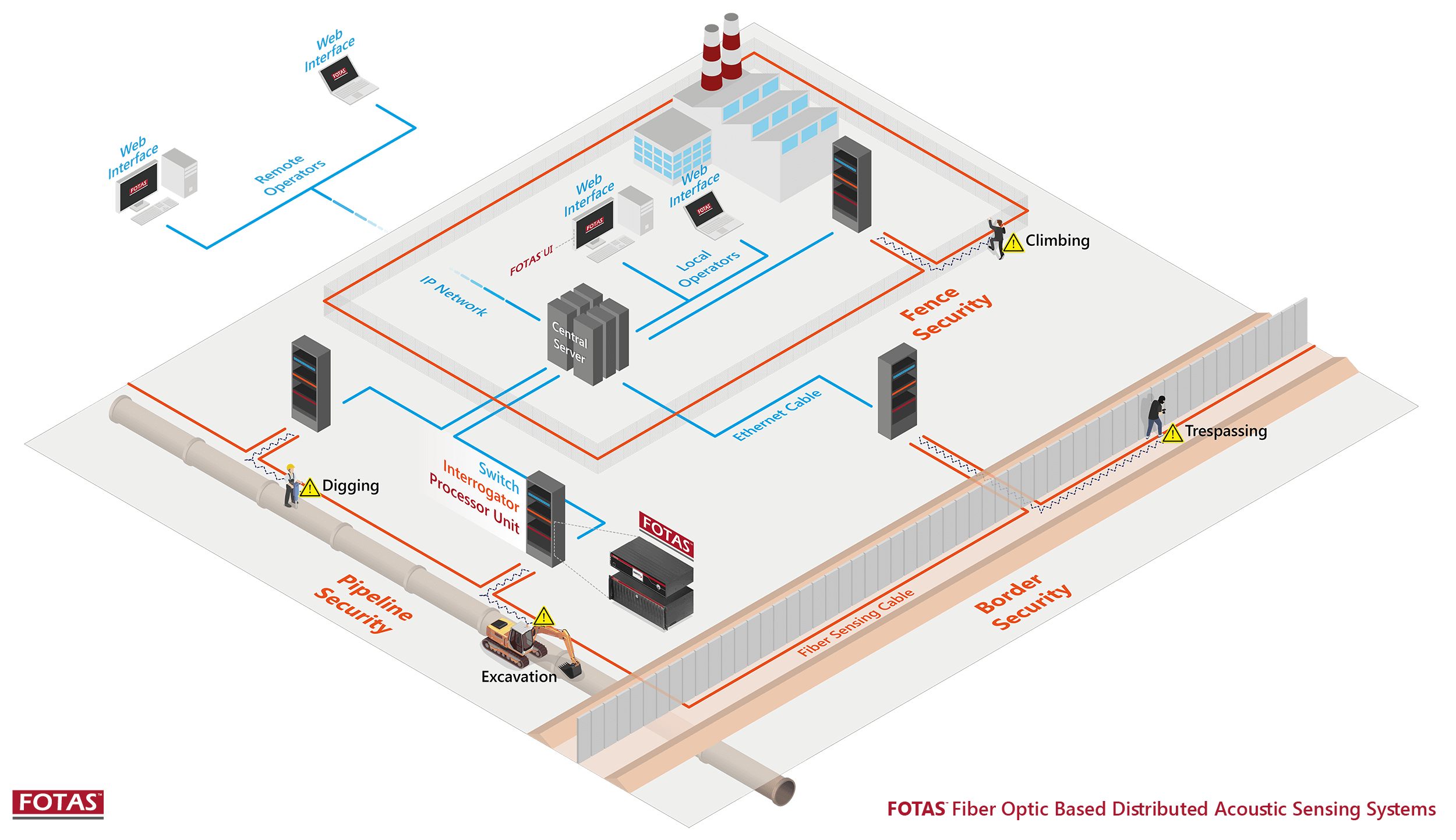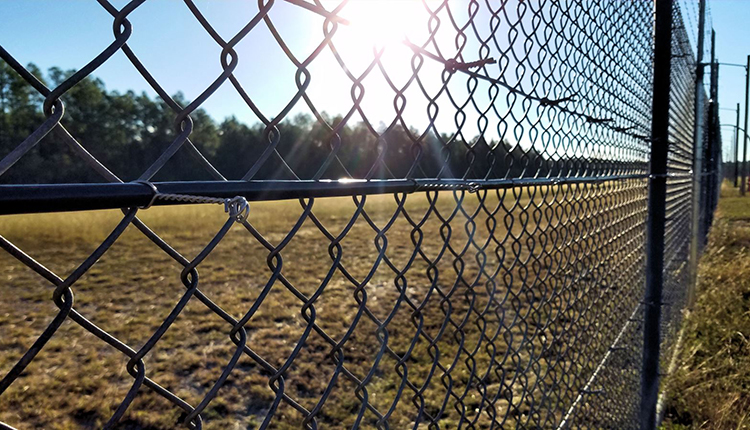How Fiber Security Helps Prevent Intrusions and Improves Monitoring
How Fiber Security Helps Prevent Intrusions and Improves Monitoring
Blog Article
Why Fiber Optic Security Solutions Are the Future of Protection
The transition to fiber optic protection systems notes a considerable improvement in the realm of defense, driven by their exceptional information transmission capabilities and resilience to exterior interferences. As the landscape of security develops along with emerging modern technologies such as AI and IoT, the capacity for fiber optics to improve and redefine safety facilities becomes progressively obvious.
Benefits of Fiber Optic Systems
One of the key benefits of fiber optic systems is their remarkable data transfer capacity, which helps with the transmission of big quantities of information over long ranges without significant loss. This characteristic is especially helpful for security applications that require the constant surveillance and transfer of high-definition video clip feeds, sensor data, and other vital details. Fiber optics can suit the expanding demands of contemporary protection systems, making certain that data continues to be intact and dependable.
Furthermore, fiber optic wires are less susceptible to electromagnetic interference, which can be a considerable issue in environments with different digital gadgets. This resistance boosts the stability of the data being transferred, thus reducing the threat of information breaches or system failings. In addition, fiber optic systems are naturally more safe and secure than traditional copper cables, as tapping right into a fiber optic line without detection is extremely tough.
The sturdiness of fiber optic cords additionally contributes to their charm. They are immune to environmental aspects such as moisture and temperature variations, lowering upkeep expenses and raising system durability. On the whole, these benefits position fiber optic systems as a robust and reliable selection for modern safety infrastructures, guaranteeing trusted and safe information transmission.
Improved Information Transmission Speed

The capacity to transmit substantial quantities of data swiftly assists in the seamless assimilation of high-def video clip feeds and advanced analytics. Safety and security systems can now process and assess info in real-time, enhancing reaction times and situational understanding. Furthermore, fiber optic connections sustain longer transmission ranges without degradation of signal high quality, making them perfect for expansive security networks.
The raised speed of fiber optic systems not just enhances the performance of protection operations but also decreases latency. This is particularly crucial in vital scenarios where prompt decision-making can protect against safety and security violations or alleviate possible threats. As companies remain to focus on safety and performance, the need for quick and trusted information transmission will most certainly solidify fiber optic systems as a keystone of contemporary safety and security framework.
Resistance to Disturbance
Fiber optic protection systems continually demonstrate phenomenal resistance to electro-magnetic interference, an important benefit in atmospheres vulnerable to electronic sound. Unlike traditional copper cable televisions, which can be adversely impacted by magnetic fields, superhigh frequency interference, and various other forms of electric disruption, fiber optic cords make use of light to transfer data. This intrinsic residential property makes sure that the signals stay clear and unchanged, despite surrounding digital activity.
Using glass or dig this plastic fibers in fiber optic page technology creates an obstacle against disturbance, enabling for reputable data transmission even in tough scenarios such as commercial facilities, urban locations with high digital web traffic, or locations near radio towers. This characteristic significantly decreases the likelihood of signal degradation or loss, making fiber optic systems specifically appropriate for safety and security applications where integrity and accuracy of information are paramount.
Furthermore, this resistance to disturbance improves the general efficiency and dependability of safety systems, making certain that monitoring and alert systems function flawlessly. In a globe where safety is increasingly intimidated by advanced technologies, the durability of fiber optic systems sticks out as an essential function, enhancing their status as a vital component of contemporary safety framework.
Cost-Effectiveness In Time
Substantial expense financial savings can be achieved over time with the execution of fiber optic protection systems. While the first investment might appear greater contrasted to conventional copper-based systems, the long-term financial benefits become obvious through minimized operational and upkeep costs (fiber security). Fiber optic cables are naturally much more long lasting and less vulnerable to ecological variables, which equates to decrease substitute and fixing costs over their life expectancy
Moreover, fiber optic systems need much less power to run, which even more lowers power prices. Enhanced information transmission capabilities enable for less repeaters and amplifiers, decreasing tools investment and enhancing setup processes. The scalability of these systems likewise adds to cost-effectiveness, as organizations can broaden their security framework without why not try these out incurring considerable additional expenses.
One more element to take into consideration is the increased effectiveness in tracking and reaction capabilities that fiber optics offer. Improved real-time information transmission can result in quicker incident reaction times, potentially mitigating losses and responsibilities linked with safety breaches. Altogether, the long-lasting advantages of fiber optic protection systems not only validate the preliminary expense yet likewise position them as a monetarily prudent choice for organizations seeking durable defense services.

Future Technologies in Protection
Progressing modern technologies are established to revolutionize protection systems, incorporating expert system (AI) and equipment knowing to enhance hazard discovery and response capabilities. These technologies will allow safety systems to assess huge amounts of data in real-time, determining patterns and anomalies that suggest potential hazards. This positive technique will enable faster decision-making and much more efficient event feedbacks.
Additionally, the incorporation of the Net of Things (IoT) is leading the way for interconnected safety and security gadgets, supplying extensive security and surveillance. Smart sensors can communicate details about ecological changes, while automated signals can alert safety and security employees quickly of suspicious tasks.
Moreover, the development of biometric modern technologies will certainly better bolster safety devices. Face acknowledgment, finger print scanning, and retina recognition are becoming a lot more advanced, providing layers of authentication that are tough to bypass.
Verdict
Finally, fiber optic safety systems represent a considerable improvement in defense modern technology, supplying unrivaled information transmission speed, resistance to electro-magnetic interference, and long-term cost-effectiveness. As the demand for sophisticated safety solutions continues to expand, the integration of fiber optics with arising modern technologies such as AI, IoT, and biometrics will certainly further boost safety infrastructures (fiber security). The mix of these innovations will make certain a much more safe and responsive atmosphere, solidifying fiber optics as a cornerstone of future security systems
Report this page